|
I recently had the opportunity to attend a marvelous performance of the Sistine Chapel Choir in the Basilica of the National Shrine of the Immaculate Conception in Washington, D.C. This was the first visit of the choir, one of the oldest in the world, to the United States in over thirty years, and was sponsored in part by the National Shrine, The Catholic University of America, and the latter’s new Catholic Arts Council. After I arrived, I noticed that it was not long before the nave of the Basilica was filled to capacity. The time before the performance afforded me the opportunity for private prayer and reflection. As I looked around the church, I was awed by the works of art surrounding me and, despite the growing crowd, could sense the spiritual beauty and ambient serenity characteristic of God’s House.
The concert itself was no less awe-inspiring. While the choir’s reputation and skill preceded it, from the very first note, I found myself enraptured by a beauty like no other. The sacred notes were uplifting yet never overpowering, as if they were directing our focus away to something greater. Listening to the notes being individually pronounced captivated the congregation and invited the audience to be placed in a calming yet spiritually-driven mindset. Each work called our attention to God, His works, and His eternal presence. The Catholic Church recognizes music’s beautiful and historic role in the liturgy as an invitation to participate in the mystery of God Himself. As Pope Francis said in his Address to Participants in the International Conference on Sacred Music, “Sacred music and liturgical chant have the task of giving us a sense of the glory of God, of his beauty, of his holiness which wraps us in a ‘luminous cloud.’” Think about the psalms prayed at Mass each day. They are ancient prayers the Church has preserved in Her liturgies! In the psalms, the people of God are able to express the full range of their emotions to Him, such as their joys (like Psalms 98 and 100), sorrows (like Psalms 69 and 88), exhaustion (like Psalm 6), uncertainty (like Psalm 23), and even abandonment (like Psalm 22). The psalms are not simply performances; they convey, guide, and evoke an emotional response from the people of God back to Him Who is the focus of the entire liturgy. By extension, the other hymns we sing at Mass should move us to participate more fully in the liturgy rather than passively watch the processions and preparation of the altar—the Mass is not meant to be watched like a secular performance! Pope Francis expands upon this, saying, [Sacred Music] is therefore firstly a matter of intense participation in the Mystery of God, in the “theophany” that occurs in each Eucharistic celebration, in which the Lord manifests himself in the midst of his people... Active and conscious participation consists, therefore, in knowing how to enter profoundly into this mystery, in knowing how to contemplate, adore and welcome it, in grasping its sense, thanks in particular to religious silence and to the ‘musicality of the language with which the Lord speaks to us.’ Hymns have also been recognized by the Church as an effective means of catechizing the faithful, including the youth. Pope Francis continued, “The various key figures in this sphere, musicians, composers, conductors and choristers of the scholae cantorum, with liturgical coordinators, can make a precious contribution to the renewal, especially in qualitative terms, of sacred music and of liturgical chant.” The works that are crafted by their hands can indeed be a beautiful means of engaging those whose ears the notes fall upon. But in order to be truly esteemed as noble and sacred, they must be holy. “In order to foster this development,” Pope Francis said, “an appropriate musical formation must be promoted, even of those who are preparing to become priests, in a dialogue with the musical trends of our time, with the inclusion of different cultural areas and with an ecumenical approach.” The next time you hear music at Mass, I suggest uniting your voice with the cantor as a prayer to God. The act of doing so invites us to offer to God a part of ourselves that we may regularly try to keep private. Done reverently, it becomes an offering of love to our Lord, as Pope Benedict XVI observed: The singing of the Church comes ultimately out of love. It is the utter depth of love that produces the singing. “Cantare amantis est”, says St. Augustine, singing is a lover’s thing. In so saying, we come again to the trinitarian interpretation of Church music. The Holy Spirit is love, and it is he who produces the singing. He is the Spirit of Christ, the Spirit who draws us into love for Christ and so leads to the Father. Questions for Reflection: How can music impact your experience of the liturgy or of God? Can you remember a time when music helped deepen your faith?
0 Comments
When I was in 8th grade, I helped teach for my parish’s religious education program and counted the hours toward my required community service time before receiving the Sacrament of Confirmation. I was an assistant for the 5th grade, and I thought it was the coolest thing. I could share with the class what I knew about the Church, even teaching them at one point how to pray the Rosary. Looking back, it seems like I was destined to teach in a Catholic school! After college, I began working at my current school in the Archdiocese of Washington (ADW), where I continue to teach and share my faith with the students. To this day, I continue to teach religion. I strive to form my students as disciples according to six elements of Catholic life: Knowledge of the Faith, Liturgy and Sacraments, Morality, Prayer, Education for Living in Christian Community, and Evangelization and Apostolic Life.
For catechists who actively pass on the Word of God to others, teaching the faith can become almost second nature. For instance, at my school, we incorporate core Jesuit principles into the curriculum each day and reflect on our own actions through prayer. In my pre-K classroom, we use these principles to talk about kindness and loving others as St. Ignatius taught. In a special way, my students are learning how to be good friends and love others the way Jesus did. In the Archdiocese of Washington (ADW), the religious curriculum has standards by which its content is measured and assessed—like any other subject area in school. In fact, ADW is trying to support catechists to do more to collaborate and keep kids engaged and excited about learning their faith. Professional development of catechists is crucial to a school, parish, or community. Learning how to be better witnesses of the faith ensures that our children are receiving the best formation of conscience they can get. Although there are people certified and educated to teach as catechists, most of us are already fulfilling that duty as faith-filled adults in the Church who witness to and spread the Gospel. Below is a list I have compiled of a description of a catechist. After reading it, do you feel called to become one?
For more information, we invite you to view the following webinar at the bottom of the page:
Question for Reflection: How can you teach the faith to others in your everyday life? I remember the first time I experienced Eucharistic Adoration. During my first week of college, I was walking back to my residence hall after grabbing dinner with some friends of mine. As we walked back into our dorm, one smiling upperclassmen was talking to some other freshman in the lobby. He saw us and made a beeline. I was only five steps away from the elevator, maybe he wouldn’t catch me. Alas, the elevator did not come in time and we ended up chatting with this friendly upperclassman. As he introduced himself, he also invited us to praise and worship Adoration that night. He promised us there would be a ton of good food afterwards. Though there were posters about this event throughout the dorm and we knew about it, we did not previously plan on attending. However, after being personally invited, being called by our names, we decided to give it a try. It was one friendly person’s invitation (and yes, the promise of food) which forever changed my faith-life. After going to Adoration and the fellowship held immediately afterwards with friends, I was hooked. College students and young adults are in a unique place in their faith journey. Many are seeking answers to some pretty big life questions. As the Church, we have the joy of being called to reach out to these sometimes marginalized members of our community and invite them to experience the love of Christ. Yet, how do we do that? As a college student myself and someone who ministers to undergraduate students, I have found that there is one way in which your parish can successfully engage Catholic young adults and college students. All college students and young adults seek a place to belong. And what better place is there than the Church of Jesus Christ? The parish community can seek to provide different opportunities for college students and young adults attending the parish to get together for fellowship. Having faithful Catholic friends your age who provide you with support on your spiritual journey is indispensable. The Christian life is not individualistic in nature, but one marked by interdependence. Being a parish which hosts events that foster communion between young adults is a key way to keep young adults engaged in parish life. Some parishes successfully do this by hosting mini-Theology on Tap series at a local restaurant, or something as simple as hosting praise and worship Adoration followed by a meal. These are just two examples of how you can help young adults feel like they belong in your parish community and experience Christian fellowship with their peers. One principle tip is to host events which have a liturgical aspect (pray compline together or have a holy hour) and a fellowship aspect (do not underestimate the power of food!). Yet, you might be thinking, there are no college students or young adults currently active in my parish! Pope Francis might have some wisdom to share with us. During Pope Francis’ journey to Brazil for World Youth Day in 2013, he told an assembly of bishops that "we cannot keep ourselves shut up in parishes, in our communities, when so many people are waiting for the Gospel.” Each baptized member of the parish community has a responsibility to be hospitable and welcoming. Each member of the parish community must be marked by their missionary zeal. Evangelization is not simply the job of the parish staff, but the calling and the joy of each Christian. Hence, it is your calling, not somebody else’s, to reach out to inactive college students or young adults and invite them back to the parish so that they can experience the love of Jesus Christ. This involves each person in the parish calling students by name. It was that simple invitation which brought me into regularly participating in the life of the Church. This responsibility, this call of each Christian to invite students and young adults by name, also becomes one of the greatest joys. *This post was originally published on our blog on April 14, 2016. “Good morning and welcome to St. Michael Catholic church. Before Mass begins, we invite you to take a moment to greet those around you.”
I was on vacation at the time I heard these words, and thus totally unfamiliar with the parish until I had searched for local Catholic churches. There wasn’t much choice compared to my options in a densely populated city, but I knew Mass was Mass—the same and just as important in the rural diocese I was visiting as it is in the Archdiocese of Washington (and the rest of the Universal Church). I was excited to experience another faith community as a visitor. After the cantor made the welcome announcement, the parishioners around me turned and exchanged greetings with their neighbors. While there were a number of familiar faces for them, mine was new. Their eyes lit up when they saw me. I appreciated the parishioner’s hospitality efforts, beginning with the first handshake and smile. As Mass began, I could not help but pick up on the small differences in the celebration of the liturgy: the church was smaller and rounder, there was a piano instead of an organ, the servers were past middle-age, and the priest liked to stroll up and down the aisle during his homily. While it was not exactly what I was used to, the actual worship of God and the spiritual nourishment of the faithful was no less authentic or beneficial. The Word of God was proclaimed in the readings and we received the real Body, Blood, Soul, and Divinity of our Lord Jesus Christ in the Eucharist. We sang hymns, exchanged a sign of peace, and participated in the usual liturgical responses, movements, and postures at the appropriate times. These experiences may very well be shared by anyone taking a vacation this summer or otherwise visiting another parish. The Mass transcends one’s location or liturgical preferences. It is ultimately the gathering and lifting of prayers of praise, petition, repentance, and thanksgiving to God Who blesses us with His grace and True Presence. In Her wisdom, the Church has laid down guidelines for the celebration of the liturgy that must be adhered to in order to be valid. Without them, the Mass would lose its focus on divine worship and partaking in the Sacred Mysteries. While different parishes and cultures may imbue a different spiritual character in the celebration of the sacraments, the Substance (God) remains the same to unite all the faithful, whoever and wherever they may be. This universality reflects that of the Church, instituted to proclaim Christ to all, especially those outside of His Body. My experience of welcome at this new church during my vacation reflected that very evangelical mission! One does not have to go far to invite another to share in the Sacred Mysteries—all are invited to enter and re-enter the liturgy, and to do so more deeply than before in order to draw more meaning and grace along one’s spiritual journey. After that morning’s Mass, the church hosted a hospitality breakfast during which I was continually greeted by other parishioners who expressed amazement that I found my way to join them in the Eucharist at such an early hour—and on a weekday! To some, it was refreshing to see not only a new face, but a young one. They were as happy to greet me and share their experiences as I was to be there and form new ones. Before leaving that church to continue on with the day, the members of the faithful drew strength from their reception of Jesus in the Eucharist and from each other in order to sustain them through the burdens and challenges of their lives. In welcoming newcomers to the Catholic Church, let us strive to extend the same heartfelt message as our Lord to the wearied disciples after His Passion: “Peace be with you!” Doing so will not only help others benefit from the graces and support offered at your home parish, but will also strengthen and enrich the life of the local church as it endeavors to minister to the world spreading the Gospel message. Question for Reflection: How does visiting different parishes deepen your understanding of the Mass? Have you ever benefitted from attending Mass in a different location or within a different culture? When I was in 8th grade, I helped teach for my parish’s religious education program and counted the hours toward my required community service time before receiving the Sacrament of Confirmation. I was an assistant for the 5th grade, and I thought it was the coolest thing. I could share with the class what I knew about the Church, even teaching them at one point how to pray the Rosary. Looking back, it seems like I was destined to teach in a Catholic school! After college, I began working at my current school in the Archdiocese of Washington (ADW), where I continue to teach and share my faith with the students. To this day, I continue to teach religion. I strive to form my students as disciples according to six elements of Catholic life: Knowledge of the Faith, Liturgy and Sacraments, Morality, Prayer, Education for Living in Christian Community, and Evangelization and Apostolic Life.
For catechists who actively pass on the Word of God to others, teaching the faith can become almost second nature. For instance, at my school, we incorporate core Jesuit principles into the curriculum each day and reflect on our own actions through prayer. In my pre-K classroom, we use these principles to talk about kindness and loving others as St. Ignatius taught. In a special way, my students are learning how to be good friends and love others the way Jesus did. In the Archdiocese of Washington (ADW), the religious curriculum has standards by which its content is measured and assessed—like any other subject area in school. In fact, ADW is trying to support catechists to do more to collaborate and keep kids engaged and excited about learning their faith. Professional development of catechists is crucial to a school, parish, or community. Learning how to be better witnesses of the faith ensures that our children are receiving the best formation of conscience they can get. Although there are people certified and educated to teach as catechists, most of us are already fulfilling that duty as faith-filled adults in the Church who witness to and spread the Gospel. Below is a list I have compiled of a description of a catechist. After reading it, do you feel called to become one?
For more information, we invite you to view the following webinar at the bottom of the page:
Question for Reflection: How can you teach the faith to others in your everyday life? In the small German village of Oberammergau, every ten years since 1634, roughly two thousand townspeople from all walks of life come together to stage the world’s most famous “Passion Play,” a dramatic re-enactment of Holy Week from Palm Sunday to the Resurrection. What that one town literally does every ten years, all Christians perform every Holy Week—and it is every bit as real. The liturgies of Holy Week teach us that we are not merely passive spectators but living participants and actors in the ongoing story of the “Paschal Mystery,” the saving life, death, and Resurrection of Jesus Christ. In our celebrations, we remember not just something that happened, but something that is happening, namely, the redemption of the world through the work Jesus Christ accomplished by His Cross and Resurrection. We are not playing someone else’s role in an entirely scripted fiction, but discovering our own part and contribution within a story that God is still writing. The basic structure of Christian existence, as a drama and extended experience of Holy Week, was one of the great lessons and insights shared throughout the life of Pope St. John Paul II, himself an actor and playwright. One of John Paul II’s biographers described the pope’s core vision of, “the cosmic drama of divine love being played out in the human quest for a true and pure love” (The End and the Beginning, 413). John Paul II received this vision primarily through his nourishment from Sacred Scripture. He interpreted life in light of the Gospel story of Jesus. The Passion Narrative in the Gospel of John, which some and dark, symbolizing the tension of love and sin that function almost like stage directions. I think we experience much of our life of discipleship as a drama, which is much different from experiencing all times and aspects of life as dramatic. The drama of life is often slow, ordinary, and unremarkable. There are long periods of waiting, working, growing, and hoping, punctuated by divine breakthroughs that remind us that He has been directing and giving commands all along. I find that I need Holy Week for its power to provide context for every frustrated hope, betrayal to those I love, loss of friends and family, and struggle to stand for what is true and just. On Holy Saturday, when things seem darkest, Jesus descends into those dark places of our world and our souls and shines a light, giving us the courage to hope that when Jesus says, “It is finished,” it actually means God is not done with us yet. Just when we think it’s over, the veil is torn and the curtain is raised—Christ is resurrected, and invites us not only on Easter Sunday, but anew each day, to live in the hope and joy of his victory over sin and death. Question for Reflection: What part or contribution is God calling you to in the ongoing story of salvation? Recently, I attended a marriage preparation weekend with my fiancé. We learned a lot about each other and grew in love and appreciation for one another, but something we discovered over the weekend was the difference in how we pray. We are both faith-filled people who serve the Church in a variety of ways, but we had never really thought about the ways we pray. We had especially never considered praying together as a couple…or so I thought. Over the weekend, the couples who shared their stories kept talking about prayer together, and it made me want to have that in our relationship, too. I thought about how my prayer life is full of journaling, talking with other faith-filled gal pals, reflection, song, and giving thanks. I learned that my fiancé’s prayer life was found primarily in the Mass and when he truly needed something. Then I thought about how we go to Mass together each week and make it the high point of the day. Turns out, we have been praying together this whole time—in the Mass! For us, going to Mass is not just something “to do” on Sundays, it’s the beginning of a new week with Christ in the Eucharist, living out His love for others through prayer and witness.
All this thinking about prayer got me asking: how many other ways are there to pray? Prayer is a funny thing. It’s not like math with a specific algorithm to follow in order to get the answer. Prayer is done by adults and children, men and women, healthy and sick, in good times and in bad, all across the world. Prayer is so diverse and can actually be simple to do. Our Catholic faith has provided us with prayers to say to God, songs to sing and listen to, quiet to listen for God’s voice, and a chance to meet him in the Eucharist at Mass. Jesus himself taught his disciples to pray when they asked him, and he left us the Our Father as a result (Matthew 6: 9-13). He wanted us to teach others these words because they cover everything you might need to say. Jesus said, “This is how you are to pray: Our Father in heaven, hallowed be your name, your kingdom come, your will be done, on earth as in heaven. Give us today our daily bread; and forgive us our debts, as we forgive our debtors; and do not subject us to the final test, but deliver us from the evil one.” Through these few words, we can become closer to God and more dedicated to living the Gospel each day. Jesus also left us with the Mass. Mass is the place where my fiancé and I first began our relationship, the place we will continue to go on a regular basis together, and where our future children will experience the presence of Christ in the Eucharist. For those who may not be familiar with the structure of the Mass, it is separated into two major parts: the Liturgy of the Word and the Liturgy of the Eucharist. Within these two parts, there are various prayers and belief statements like the Responsorial Psalm and the Nicene Creed. The “source and summit of Christian life” is the Eucharist, and it comes after we have heard the Word, or the scripture readings (Lumen Gentium, 11). Together, these two parts help us become witnesses of the faith and of God’s love for others. For some, Mass is not where they experience deep prayer and closeness to Christ like my fiancé does. Some feel close to Christ in nature and through wonder and awe. Some find God in the quiet reflection of their day. Others pray each day with a Rosary, Liturgy of the Hours, or other conventional prayers. Personally, I like to switch up my prayer routine and experience different forms of prayer. Prayer is amazing because we have so many ways we could pray and yet, no matter which way we choose in that special moment, we are still opening our hearts to God. In prayer, we are creating a connection with God. This is such a complex concept, talking with our Creator, but so simple to do! Let us close in a simple but powerful prayer: Glory be to the Father, and to the Son, and to the Holy Spirit, as it was in the Beginning, is now, and ever shall be, world without end. Amen. Question for Reflection: What are a few ways to incorporate communal prayer into your spiritual routine? If you are in a relationship with a significant other, reflect upon what ways you pray together. Click here for more resources on Prayer and Catechesis. "Good morning and welcome! Today, we celebrate the Xth Sunday in Ordinary Time. Please stand and join in singing hymn number…" Most of us will hear these words, or words very close to them, for over thirty Sundays a year. After the joyful season of Christmas, it can seem too ordinary, almost boring, to return to Ordinary Time in the Liturgical Year. Instead of the extraordinary stories of Christ's birth in the Incarnation, we've gone back to the Jesus stories many of us grew up hearing: Jesus healing lepers, chastising Pharisees, and preaching to crowds. While Jesus’ ministry is anything but ordinary, our familiarity with the stories of the Gospel often desensitizes us to their extraordinary depth and power. It’s much easier to see the seasons of Christmas and Easter, as well as Advent and Lent, as extraordinary. They're special seasons of the Liturgical Calendar, set aside to celebrate and reflect on the greatest mysteries of our faith: the Incarnation and the Passion and Resurrection of Christ. These liturgical times make us feel our faith in a more visceral way. There's nothing like the gut-wrenching Passion narrative or the beautiful story of the Nativity to set our hearts ablaze for Christ! But if our experience of the Christian faith was nothing more than an emotional high, we would never be able to see Christ in anything but the heavily emotional experiences. That's what Ordinary Time gives us: it sustains our faith between the emotional highs and lows of Christ's birth, death, and resurrection. It reminds us that God is often most present to us in our ordinary humanity. May we not forget that Christ himself lived ordinarily for thirty years as a carpenter’s son in Nazareth. It's in Christ's day-to-day ministry that He meets people where they are and experiences the human condition with them. When He forgave the woman at the well, it wasn't at a big celebration, but in the very ordinary act of gathering water. When He called Zacchaeus down from the sycamore tree, all He wanted to do was share a meal. When He flipped the moneychangers' tables at the Temple in anger, He was there for the weekly observance of the Sabbath. Ordinary Time isn't about the humdrum monotony of life. It's about the slow, incremental action of the Holy Spirit in our lives. It's about, as St. Vincent Pallotti said, seeking God in all things. Just as we get up every day and go to work, we are called to use Ordinary Time to get up every day and give our best to God. So what can we do to live Ordinary Time well? The options are endless! —Maybe you like studying Scripture, but don't know where to go deeper? Take a look at the practice of Lectio Divina. —If you feel a strong draw to the Liturgy, try attending Daily Mass once a week or following the Liturgy of the Hours. —Do you sense a call to serve more with more intentionality? Explore the needs in your community. It doesn't have to be a Church ministry to be service! After all, we're given the instruction to "Go forth!" at the end of every Mass. The beauty of our faith is that there are so many ways to experience God in our lives, to connect with Him and bring His message of love to the world. It doesn't matter which way we choose to work on our relationship with Him, so long as we do so with intention. A healthy challenge for us all might be to pick just one practice to begin making into a habit during Ordinary Time. May we invite God to shift our perspective on the “ordinary” and help us see His extraordinary presence and grace in our journey of faith! As I wrote this post, the Catholic University of America was preparing to celebrate Homecoming, when over 1,500 alumni and their guests returned to their alma mater. The weekend itself is a joyful occasion, a chance for classmates to catch up with one another and see what has occurred in the time since graduation. While life often takes alumni down different paths, Homecoming offers everyone the opportunity to reconnect with the place that, and the people who, helped launch the next chapter, whether it was one of service, religious vocation, family life, and/or employment. Homecoming itself reflects the willingness of the University to throw open its doors to welcome back all, no matter how long they’ve been gone or why they stayed away. It’s a tried-and-true model and it’s along these lines that the Church opens her doors to those who might have fallen away, whether because of a poor experience or because of a lack of interest or engagement. Initiatives such as “Catholics Come Home,” or the Archdiocese of Washington’s “The Light is On For You,” and similar diocesan programs nationwide, seek to welcome back Catholics who have been absent from the life of the Church. The projected tone and nature of these programs is of authentic openness and welcome — free of any judgement or bitterness. The goal is to encourage those who have been away to re-encounter the perfect love and understanding of our Lord as manifested and offered by His Church. The doors of the Catholic Church are open year-round for those seeking something better than what the world offers but there are moments in the liturgical calendar which emphasize and focus on refreshing one’s spiritual life such as Advent and Lent. Similarly, the invitation to participate in or observe the sacraments being celebrated can be an emotional catalyst for one to come back or renew his or her baptismal promise. Emotions, such as the awe of witnessing a reverent First Communion or religious profession, the joy of a marriage, or the hopeful rawness of a funeral, can move one to respond to a previously suppressed or unrecognized call to reconciliation with the Church. These “moments of return” can awaken a longing for an interior peace that only the Lord can provide. As Pope Francis encourages: Maybe someone … is thinking: my sin is so great, I am as far from God as the younger son in the parable [of the Prodigal Son], my unbelief is like that of Thomas; I don’t have the courage to go back, to believe that God can welcome me and that he is waiting for me, of all people. But God is indeed waiting for you; he asks of you only the courage to go to him… I have always pleaded, “Don’t be afraid; go to him; he is waiting for you; he will take care of everything.” We hear many offers from the world around us, but let us take up God’s offer instead: his is a caress of love. Archbishop Sheen, the great evangelizer who brought millions around the world into an encounter with the Lord via his weekly TV program, Life is Worth Living, encourages us to seek out those who have everything to gain by entering into Christ’s body on earth but are currently missing out: What was the first word of our Lord’s public life? That’s the key to preaching. It was ‘come.’ Come. Come to Me. Be enflamed with my Truth. Be on fire with my Love. And what was the last word of our Lord’s public life? It was ‘Go!’ First we come, then we go! (Sheen, “The Art of Preaching,” 1972) Just as the gift of faith was freely shared with each of us, how enthusiastically, then, we must go and share the Good News with everyone on the highways and byways — we cannot keep it to ourselves! As we begin to prepare for the celebration of our Lord’s birth during the Advent season in a few weeks, why not invite someone to join you for the beginning of a new liturgical year — and the beginning (or rediscovery) of something deep within that person that can only be the desire to know our Savior. By doing so, by planting the seed of the Word in people’s minds and hearts, by boldly meeting people where they are in life rather than waiting for them to come to us, each of us who are sharers in the Church’s ministry can cause much rejoicing in heaven (Luke 15:1-7). Let us embrace those who have been away for a long time, crying out, “Welcome home!” Beginning Tuesday, December 8th , the Catholic Church will begin to celebrate the Extraordinary Jubilee of Mercy. Throughout the 2016 liturgical year, the Church around the world is participating in, celebrating, contemplating, and commemorating God’s mercy in our lives. Pope Francis in his papal bull, Misericordiae Vultus, discusses what the Jubilee should look like: “We need constantly to contemplate the mystery of mercy. It is a wellspring of joy, serenity, and peace. Our salvation depends on it. Mercy: the word reveals the very mystery of the Most Holy Trinity. Mercy: the ultimate and supreme act by which God comes to meet us. Mercy: the fundamental law that dwells in the heart of every person who looks sincerely into the eyes of his brothers and sisters on the path of life. Mercy: the bridge that connects God and man, opening our hearts to the hope of being loved forever despite our sinfulness. At times we are called to gaze even more attentively on mercy so that we may become a more effective sign of the Father’s action in our lives. For this reason I have proclaimed an Extraordinary Jubilee of Mercy as a special time for the Church, a time when the witness of believers might grow stronger and more effective.” What is happening from December 8, 2015 to November 20, 2016 during the Jubilee? Beginning on the feast of the Immaculate Conception, Pope Francis will open up the holy door of St. Peter’s Basilica and allow all who enter to receive a plenary indulgence for their pilgrimage to the site. Pope Francis has emphasized the wish for individual dioceses by the power of the local bishops around the world to open their designated holy doors, in a sign of solidarity and universal pilgrimage for all people to attend and receive this grace. During the Jubilee Year, Pope Francis has called all of us to place special emphasis on understanding Christ’s mercy and how we can show that mercy to others. For myself, I will try to put special emphasis on what it means to show mercy by using the Corporal and Spiritual Works of Mercy as a guide throughout 2016. The Works of Mercy have always served as a good way of measuring what I am called to do as a Catholic. Throughout the year, I would like to commit to praying for others in addition to my family, friends, and myself. I would like to pray especially for those I do not know: the imprisoned, the homeless, and those suffering in silence—that all may know of the mercy of God. Even though I am a volunteer catechist at my local parish, I still want to try to incorporate more works of mercy into my life. As much as it may help others, it ultimately provides me an opportunity to express my faith and learn and grow in my appreciation of God. In simple acts of charity, such as donating platelets frequently for those who are victims of cancers and accidents in my local area, I hope to express the understanding of mercy that we are trying to emphasize during the upcoming Jubilee of Mercy. It is my hope that this year you and your family will take an intentional step to incorporate the Works of Mercy into your family prayer life and live more fully the mission of Christ in the world today.
Invest me, O Lord, as a new man, who was created by God in justice and the holiness of truth. Amen. With this prayer, I and my fellow altar servers finish vesting for Mass. By no means is everything ready: the candles need to be lit, the Missal has to be set, the vessels have to go out to the credence table, and Father has yet to first arrive and then share his personal preferences for helping him throughout the celebration, among other details and roles. Even as an altar server for eleven years, I remain mindful that to assume I know how everything will play out during the liturgy could prove embarrassing. Yet the Mass will continue, the Eucharistic Sacrifice will still be offered, and our Lord will still be present as the community gathers to pray and give praise to God. The presence of an altar server, then, is by no means critical to the ecclesial prayer, but, as the name suggests, is purposed to serve the presider as well as Jesus Christ, the eternal High Priest. For me, the chance to serve at the altar in this capacity affords me the opportunity to participate more fully in the liturgy and so deepen my faith. Beyond the initial excitement of being able to wear a cassock (Galatians 3:27), this ministry requires that I remain more attentive and alert throughout the Mass than if I were among the congregation. At the same time, being in a place of privilege near the altar and the presider helps me to realize firsthand Jesus’ active presence in every liturgy. In my experiences of serving at my home parish, as part of the University’s Campus Ministry, and in the Basilica of the National Shrine, some of the ways this happens is carrying the wood (or metal) of the Cross during the processions (Matthew 16:24), bringing forth the light of the candles (Matthew 5:14), holding (and reading) the prayers in the Roman Missal for the presider, swinging a thurible (Psalm 141:2) and other simple-yet-significant tasks. Of course, the altar server is not to be the focus of the Mass; if anything, the server must be a reminder for the congregation, when their eyes wander, to conduct oneself worthily, attentively, and devoutly; by every action and example at the altar, the altar server brings glory to God and souls to the Church. Certainly in my experience, there is the temptation for the altar server to feel smug or prideful of being able to contribute to the liturgical life of the Church in this way. But then I am also reminded that the role of the altar server is to help keep the order of Mass flowing smoothly: there are tasks to complete and to complete well… and there is great pressure to not degrade what Fr. Frederick Faber called “the most beautiful thing this side of heaven” by haste, carelessness, or inattention! The altar server then uses that faithful completion of the work to reflect upon the service of Christ during ministry, to imitate such Love and give oneself totally to others (Mark 9:35). With all that the altar server does in the presence of the congregation, there is also that which is done out of their sight both before and after Eucharistic celebrations. There is something beautifully intimate about being the only one in a church while setting or cleaning up. In the silence and the stillness, it’s just Christ (present in the tabernacle) and the altar server, the Lord and His faithful servant. How many times have I been able to find comfort in the prayers I silently offered in those moments! Finally, when the priest arrives, it is like welcoming an old friend as we go over the liturgical details for the day before entering into a casual discussion of our lives. By the time Mass ends, the priest and I have deepened a sort of fraternal bond as we participate in so important a celebration. When we get to the sacristy however, we don’t pat ourselves on the back but immediately bow to the Crucifix, remembering how the Mass transcends our individual piety--it is for the benefit of all and for each: Pro sit. Pro omnibus et singulis! I remember the day, many years ago, that my pastor came around to the fifth grade classrooms wanting us to sign up for the training for altar servers. He explained that it was a tradition in our parish for the fifth graders to begin assisting with this important liturgical role. Most of the class eagerly signed up and we embraced our new role with gusto. Despite only being 10 years old, we knew that we had an important role to play in the Mass by assisting with the celebration of it. Throughout my time in grade school, I developed a love of serving at Mass. I found that through being involved in the liturgy, I grew in appreciation for the ceremony and tradition that surrounds Mass. I learned the parts of the Mass and was taught firsthand by the priests why we do the things we do at liturgy.
Fast forward 13 years after I first began altar serving, and I am still an active altar server at a basilica in my city. I am fortunate that the staff of the basilica has been extremely supportive of my involvement as an altar server. There is a camaraderie among the liturgical ministers that I have found to be one of the many benefits I have gained from my time as an altar server, and one of the reasons I keep coming back each weekend. Women in the Church today are becoming more involved and fulfilling more leadership roles. We are a crucial voice in today’s Church, and it is important to recognize and appreciate the role women play in the liturgy. Every time that we go to Mass we must recognize that just the simple act of celebrating the Mass takes place because of the efforts of lectors, musicians, cantors, Extraordinary Ministers of Holy Communion, ushers, sacristans, servers, and countless others. Each of these liturgical ministers finds joy in the role they fulfill at Mass. I encourage you to consider volunteering at your own parish! In today’s Gospel, Jesus tells us: "Come to me, all you who labor and are burdened, and I will give you rest. Take my yoke upon you and learn from me, for I am meek and humble of heart; and you will find rest for yourselves. For my yoke is easy, and my burden light.” Each time we go to Mass we are given the chance to connect with Christ on a personal level. We bring Him our joys and sorrows, we listen to Scripture, and we become one with Him in the Holy Eucharist. Being involved in liturgical ministries is a way to bring a new dimension to your personal experience of Mass. By serving in various roles at the liturgy, we can come to Christ in a more intentional way. Rebecca Ruesch is the Blog Editor for the Catholic Apostolate Center To celebrate the Catholic Apostolate Center passing 50,000 "likes" on Facebook, Communications and Social Media Intern Andrew Buonopane created a list of 50 Ways to Enjoy your Faith. This is the fourth post in a five-part series where we'll share the whole list. Check back on the first Tuesday of the month for another installment! #20- Celebrate the Easter Octave Did you know that as Catholics, we celebrate both the “season” of Easter (which lasts 50 days) as well as especially celebrating the Octave of Easter which concludes this Sunday on Divine Mercy Sunday. #19- Devotion to Our Lady of Sorrows During Holy Week, we truly saw our Blessed Mother in her role as Our Lady of Sorrows. We experienced with her Christ’s death. How do you think she felt watching her son suffer so greatly? #18- Consider Parish Ministry Getting more involved in your parish is a great way to enjoy your faith! See if there are needs your parish has that you might be able to fill! #17- Adoration Eucharistic Adoration is a way to experience Christ in the Eucharist outside of the Mass. See if your parish has Adoration and if you’ve never gone before…try it! #16- Understand the Liturgy Sometimes we can get into the habit of “going through the motions” at Mass. Next Sunday, pay special attention to the rituals and prayers of the Mass. Ask yourself why we say and do everything at Mass. Take some time to learn more about the liturgy! #15- Devotion to Guardian Angel “Angel of God, My Guardian Dear…” is a prayer you may have been taught as a child. But did you know there’s a lot more to Guardian Angels? Check out this blog post which talks more about them! #14- Practice Forgiveness Turning the other cheek isn’t easy to do sometimes. But practicing forgiveness is an important part of our faith lives. #13- Devotion to Thomas Aquinas St. Thomas Aquinas was one of the Church’s earliest scholars. Much of his work is still taught today in theology and philosophy classes. Have you ever read his arguments on the existence of God? If not, take some time to check it out! #12- Devotion to Teresa of Avila St. Teresa of Avila is a great saint to model in your daily life. Take a moment to learn more about her! #11- The Paschal Mystery: Last Supper to Resurrection The Paschal Mystery is what we just celebrated last week in the Triduum. We recall Christ’s death and Resurrection and the liturgies celebrated at the Triduum take us on this journey.
To read the previous installment in this series, click here: Part I | Part II | Part III Andrew Buonopane is the Communications and Social Media Intern at the Catholic Apostolate Center There are many places in life where we find joy. Often times, I find joy in my family – going home for holidays and being with the people that I love the most. I find joy in my friends – a second family that arguably knows me best. I find joy in my work – encouraging others to support an institution that means so much to not only me, but also to the Church in the United States. When I think of my Catholic faith, I can only think of joy. This was especially evident during the election of Pope Francis when I saw the entire world rest its eyes on our Church. It gave me great joy to answer people’s questions about my faith, help them to learn more about what it means to be Catholic, and strengthen my own faith. Joy in our faith can be found in a variety of different contexts. The one place where I find the most obvious joy, however, is within the hymns and songs of praise that are sung so beautifully in churches throughout the world. Over this past Triduum and Easter Sunday I heard magnificent music that brought people to tears.. One thing which astounds me every time I attend Mass is that it doesn’t matter if you can sing or not – liturgical music is meant to be sung by anyone. The entire congregation is meant to join in and sing their praise to God. You can see visually the people around you either belting their notes or perhaps listening intently to those around them. Whichever way one chooses to participate, there is no doubt that you can find Joy within the music both sung and played. One of the things I like to do immediately upon entering a pew is to figure out what hymns are going to be sung as the processional and recessional. If I don’t know the hymns, I try to hum the notes to myself in an effort to learn before the music starts. When the organist starts playing, I am transported – if only for a few brief moments – to a place of Joy. The people singing around me are all focused on one thing: praising God, saying thank you for giving us this day, and joining together to start off their week on the right foot. As I was writing this post, I stopped to go to Mass in downtown Washington, DC. Again, the music chosen immediately brought me into the moment. Each liturgical season brings with it an amazing group of hymns. Everyone I’ve spoken to have their favorites, especially at Christmastime. As for me, I’m a sucker for Easter hymns. Whatever the case may be, liturgical music has a way of bringing us closer to God in so many ways. Next time you’re at Mass, take it in – notice that everyone around you is all focused on the same thing: praising God and thanking him for giving us this day. What’s my favorite hymn? Too many to choose from, but I’ll leave you with this beautiful piece of music that I think anyone can appreciate – especially when you least expect it. Chris Pierno is the Media & Marketing Manager for the Catholic Apostolate Center. Editor's Note: This post was originally published on April 25, 2013 Have you ever sat behind a family in church who don’t realize their child is tearing out hymnal pages silently? That was me when I was young. My brother would bring a whole container of Cheerios and still end up chewing the wooden pew, and my sister would constantly be passed back and forth to Mom and Dad until she either fell asleep or stopped chattering. Families who bring young children to church are establishing a foundation on which their faith can be encouraged throughout their lives. Interestingly enough, all three of us are now grown-up, moved away from home, and are regular attendees at Mass. Our commitment to faith and the Gospels has never ceased, but only grown into what it is today.
Soon we celebrate an important day in the liturgical year…the Fourth Sunday in Ordinary Time! Not what you were expecting me to say, right? As we listen to the Gospel at Mass each week, our hearts journey alongside Christ’s teachings and we parallel these teachings to our own day-to-day lives. We often forget that Jesus’ miracles and most famous parables occur during Ordinary Time! Surely, there is no coincidence that during these weeks of Ordinary Time, when Jesus is teaching his disciples, he is also teaching us. As we hear in this week’s Gospel of Mark, “The people were astonished at his teaching” (Mk 1:22). Just as those who heard Christ’s teaching firsthand, so shall we open our hearts and hear him, too! The Catechism teaches us that Sundays are the “principle day for the celebration of the Eucharist because it is the day of the Resurrection. (CCC 1193). Throughout the liturgical year we come together on Sundays to celebrate the paschal mystery, that is the death and Resurrection of Christ. Ordinary Time is an important part of the celebration of this paschal mystery. Ordinary Time can often be understood as time between the two holiday seasons. This period can be viewed as Christmas is over and Lent has not begun. There are two times during the Liturgical year. First is the time between Christmas and Lent, which begins at the Feast of the Baptism of Our Lord and lasts until Ash Wednesday. The second instance of Ordinary time begins the Monday following Pentecost and lasts until Advent. Ordinary is taken from the word, ordinal which literally means “counted numbers.” Many Catholics think of Ordinary Time as boring, usual, or “ordinary” Sundays instead of numerically arranged Sundays. Through the efforts of the New Evangelization, it is necessary to demonstrate to others the significance of weekly Mass, especially during Ordinary Time, to enhance our knowledge and message of the Gospels. Ordinary Time is a chance for Catholics to cultivate our understanding of Christ’s mission of love, and try our very best to be more like Him every day. So this Sunday, on the Fourth Sunday of Ordinary Time, focus on the message of the Gospel and the relevance of the Word in your life. Coming to church on a Sunday that is not for Advent, Christmas, Lent or Easter is not easy task for some people or families. If you see a family with young children in church this weekend, say a short prayer for those parents. It is not easy to take small children to Mass on a non-school-day, so a short prayer or an understanding smile might make it all worth their while. With your better understanding of the liturgical year, you too can let others know that Ordinary Time is not the boring-bunch-of-green Sundays, but a chance to grow closer to God and your neighbor. Now, if they ask you about the time between Christmas and Easter or Easter and Christmas you can respond with, “There is nothing ordinary about it!” Krissy Kirby is a teacher for the Archdiocese of Washington, D.C. |
Details
Archives
April 2024
Categories
All
|
About |
Media |
© COPYRIGHT 2024 | ALL RIGHTS RESERVED

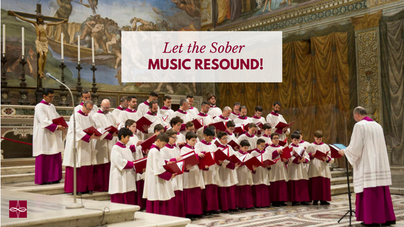

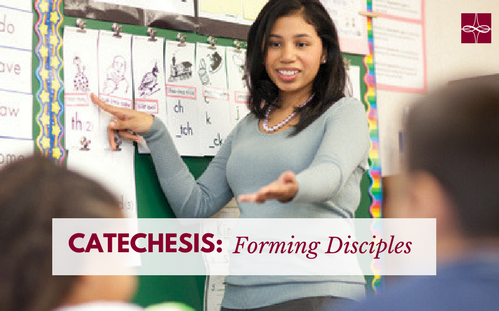

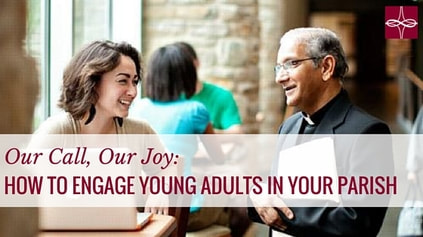

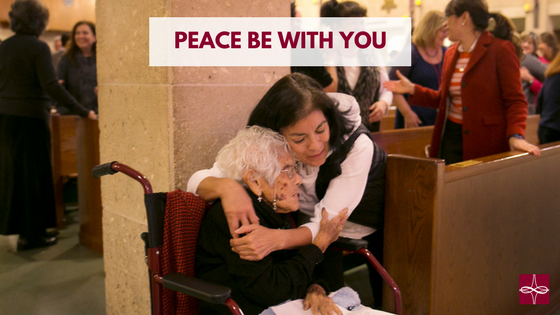

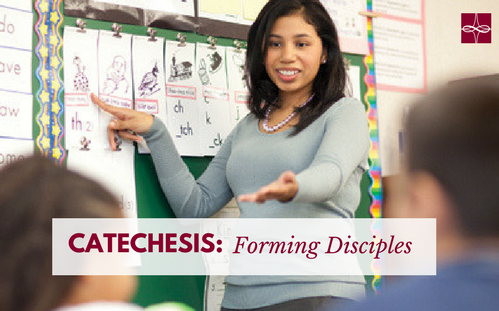

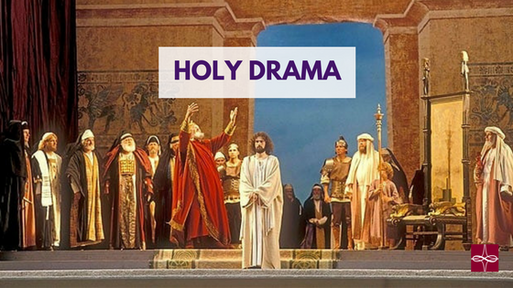

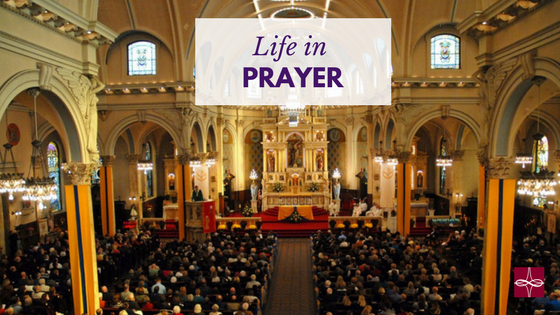

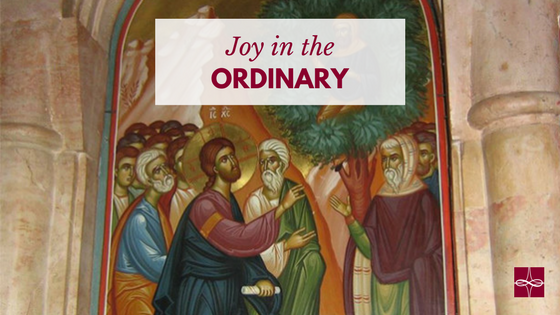

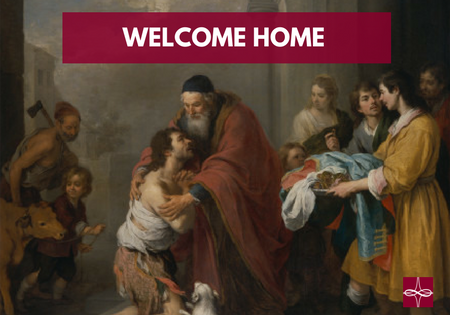

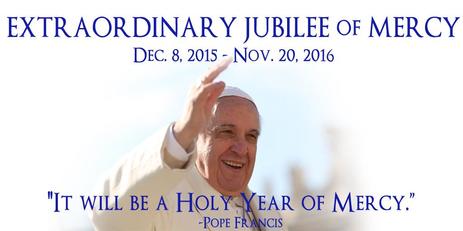

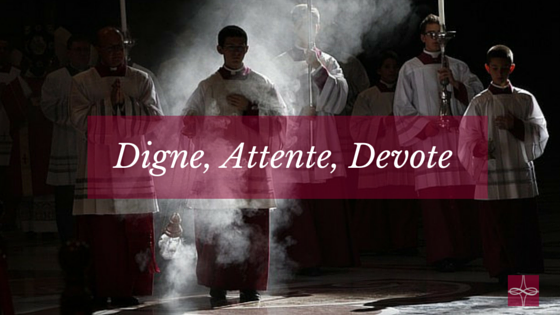

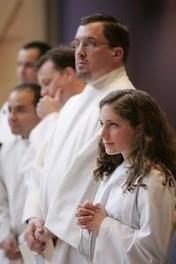
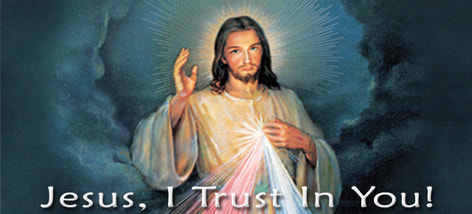
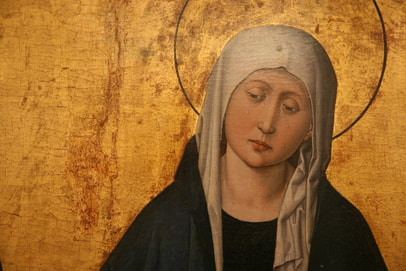

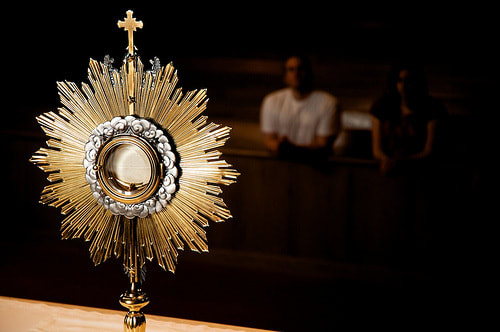
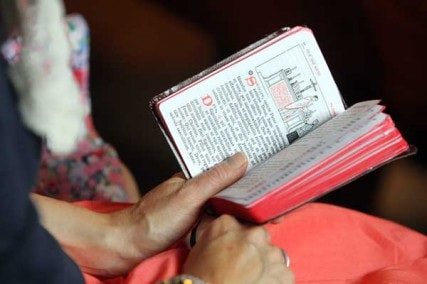
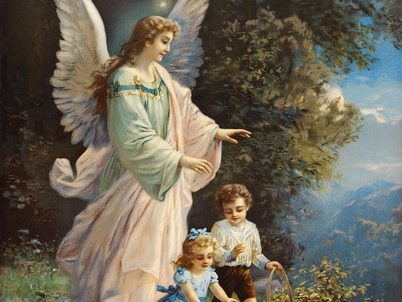



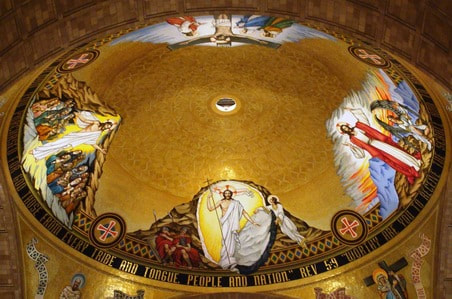

 RSS Feed
RSS Feed